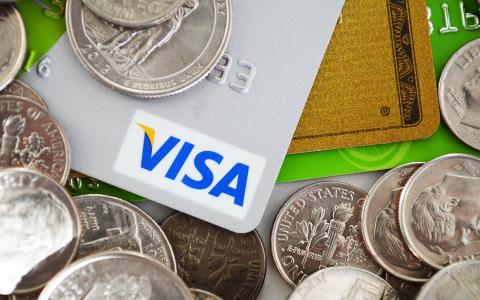
(Yahoo!Finance) - The share of folks falling behind on credit card and personal loan payments is increasing, several reports found, especially among the riskiest of borrowers.
The "delinquency transition rate" for credit cards—the share of credit card debt that is 30 days or more past due—increased by 0.6 percentage points during the first three months of the year, according to a Federal Reserve Bank of New York report released Monday. That's approaching pre-pandemic levels.
That echoes last week’s first-quarter report from credit bureau TransUnion, which found that delinquency rates increased year over year on credit cards and unsecured personal loans.
The rise in missed payments is prompting lenders to pull back on their looser lending requirements. But, they’re keeping a common recession countermove, reducing credit limits, at bay for now.
“We have seen fairly material increases in delinquency rates, in decent part attributable to so many originations in the second half of 2021 into 2022 were to riskier borrowers in below prime risk tiers,” Charlie Wise, TransUnion’s senior vice president of research and consulting, told Yahoo Finance. “They have been true to their credit scores and have higher delinquency rates.”
Lending increased
Credit card balances stayed near or at record highs, according to various reports. TransUnion recorded nearly 20% year-over-year growth in credit card balances, while the NY Fed report put the annual increase at 18%. Both have total outstanding balances just below $1 trillion at the end of the first quarter.
Meanwhile, balances on unsecured personal loans hit a record high of $225 billion, according to TransUnion, up 26.3% from the same period last year.
Wise said the increase in balances in tandem with the rise in delinquencies could be a sign of trouble among those riskier consumers.
“With higher inflation and other pressures on their wallets and higher interest rates, that segment of consumers may be feeling some potential distress now,” he said.
Wise noted that during the first years of the pandemic, Americans — armed with plentiful government support — paid down their balances. Lenders, as a result, became more generous in their lending standards, and the number of consumers with a credit card or personal loan swelled.
The number of borrowers with at least one credit card and carrying a balance grew 10% to 165 million in the first quarter from 150 million in the first quarter of 2021. The number of consumers with a personal loan jumped almost 18% to 22.4 million from 19 million during the same period.
Now, lenders are rethinking those easier standards.
Over the first quarter — and amid turmoil among regional banks — a significant number of banks reported tighter lending requirements for credit card, auto, and other consumer loans, according to a Federal Reserve survey of senior loan officers released last week.
“The typical reaction or response to changing environments is you change your underwriting criteria to meet your delinquency expectations,” Wise said. “So if I had a credit score cutoff of X before, maybe I increase that.”
But what lenders aren’t doing yet is reducing credit lines and loan amounts, according to Wise.
The average limit on new credit cards was $5,421 in the third quarter, up from $5,226 a year ago, according to TransUnion. The average personal loan balance hit its highest level on record at $11,281 during the quarter, while the average size of new personal loans increased by nearly 11% from last year to $7,368.
That’s a somewhat positive sign, partly because lenders reduce credit lines when they sense an economic downturn.
For instance, during the Great Recession, banks lowered limits by approximately $405 billion between June 2008 and January 2010, Jonah Kaplan, senior program manager of consumer reporting markets at the CFPB, told Yahoo Finance. The COVID pandemic was no different: 14 of the top credit card lenders cut $99 billion in available credit in 2020.
For the most part, Wise doesn’t see too much trouble yet on the horizon — even with the uptick in delinquencies — as long as unemployment remains low.
“The good news is that I wouldn’t characterize that consumers are over-leveraged or that we have significant strain in the market,” Wise said. “The big wild card in all this is it’s all happening in an environment with historically low unemployment rates. If those rates tick up, more will start to feel financial stress.”



